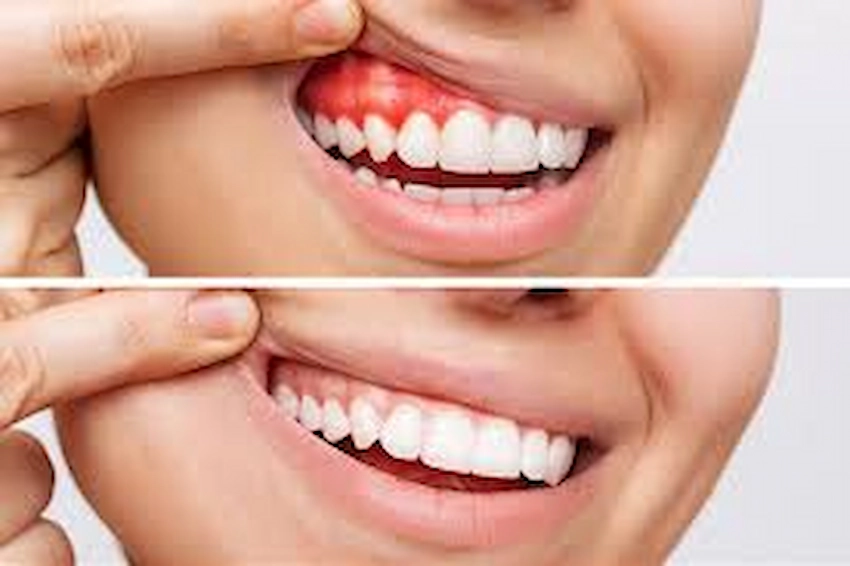🦷 What is a Panoramic X-Ray and How is it Taken?
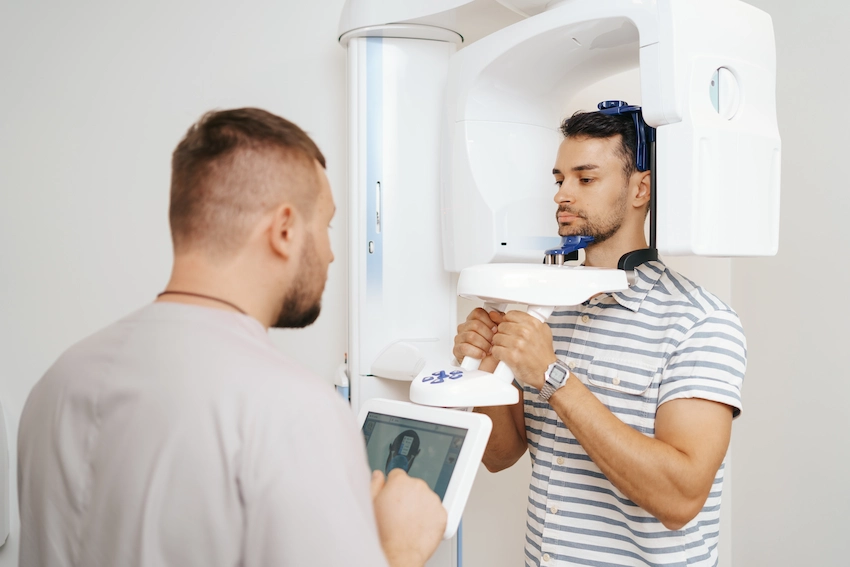
What is a Panoramic X-Ray and How is it Taken?
As far as your dental health is concerned, knowing the different tests that your dentist undertakes can be of great help in reducing the anxiety that you feel when you go for the visits. A panoramic dental X-ray is one of the most common and powerful tools, an imaging technique indispensable in dentistry. It provides a comprehensive view of your entire mouth in a single image. Lema Dental Clinic, located in Istanbul, Turkey, is a center of excellence in dental diagnostics where the most advanced panoramic X-ray technique is used for the detection of dental issues that are not yet visible during the patient’s routine check-up.
What is a Panoramic Dental X-Ray?
The panoramic x-ray or orthopantomogram (OPG) is a modernized imaging method, a diagnostic course of action providing details of all the teeth, jaws, and the adjacent structures, in one full-frame image. In comparison with the conventional dental x-rays, where only a localized area of the mouth is usually associated, a panoramic x-ray is an imaging modality that captures a broader part of the oral cavity, thus allowing the dentist to have access to the entire upper and lower jaws, jaws, paranasal sinuses, temporomandibular joints, and the bones around the latter.
This kind of shot is useful in establishing a multitude of pathological conditions. The dental-and-maxillofacial radiologist makes use of panoramic x-rays for the diagnosis of different malformations in the field of dentures and their supportive tissues, also, for the establishment of the existence of those pathologies (impacted teeth, bone infections, cysts, tumors, jaw- or sinus-related anomalies) which made this detailed x-ray image necessary. Also, it serves as the foundation for a comfortable and successful treatment regimen for braces, tooth extraction, or dental implants, and so on. The use of these scans is also indispensable when a dentist screens the bone density via its health status before deciding on, say, the kind of dental implant that is appropriate and the restorative treatment to be followed. The bone status is evaluated from the X-ray taken.
How to Perform a Panoramic Dental X-Ray?
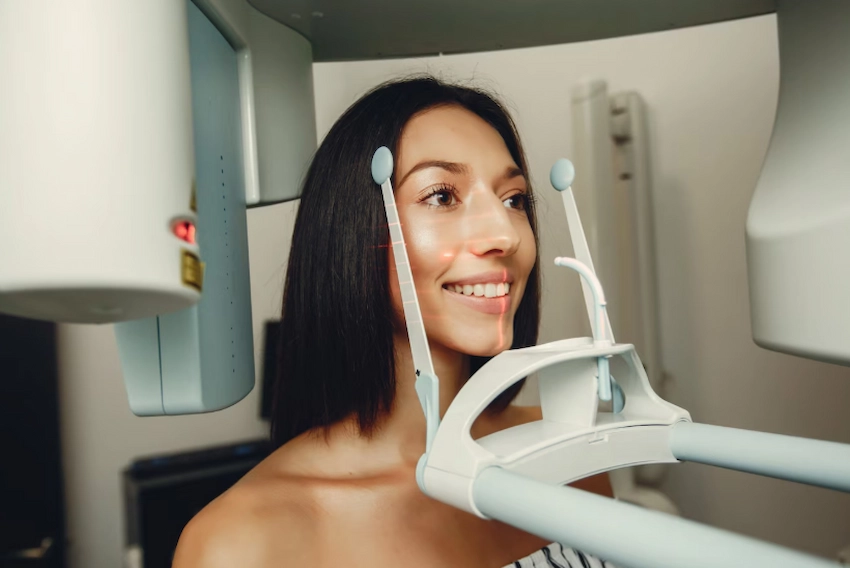
Doing a panoramic dental x-ray is [quick and straightforward activity in which people stand still and a machine that is rotating takes a shot of the image. The protagonist will typically spend a few minutes on it, and the process is painless. The dentist will make sure that your teeth are parallel to the machine, which will then go around your head in a circular motion. The machine will ask you to bite down gently while it is taking the pictures, and keep your head as still as possible so the x-ray is clear and precise.
In general, picking a situation in which it is not a severe case, a panoramic x-ray is not complicated, and is, in fact, comfortable. They will take off your glasses, any metal jewelry you are wearing, or other stuff that might interfere with imaging. The appliance will swirl around your skull within 180 degrees, and it will continue capturing the essential images of your teeth and jaws. You are required to be as motionless as possible while the machine is on. The dentist will have the X-ray ready as soon as they are done, to go through the information with you.
Does a Panoramic Dental X-Ray Cause Pain?
Undoubtedly, the first and foremost benefit of panoramic dental x-ray technology is its pain-free nature. You won’t feel any pain, nor will you receive any injections. However, you will still feel a minimal amount of vibration caused by the machine moving around your head. Nevertheless, this does not cause any discomfort, and you are still pain-free. The whole procedure is non-invasive, and there are no discomfort or pain issues that are normally rampant in other dental procedures.
One of the major advantages of a panoramic dental X-ray is that it is painless. It is not associated with any pain, and no side effects or discomfort are being experienced by you. You may feel the machine vibrating, but this is normal and not painful. The method is non-invasive, and individuals do not have to bear severe pain, which is generally the case with other dental procedures.
People with dental anxiety find relief in the information that this imaging procedure is not only brief but also effortless and without pain. A panoramic dental x-ray is not only easy, comfortable, and without pain for a patient of any age, but also doesn’t require any special preparation and doesn’t cause any physical discomfort.
Can Panoramic Dental X-Rays Be Considered Harmful?
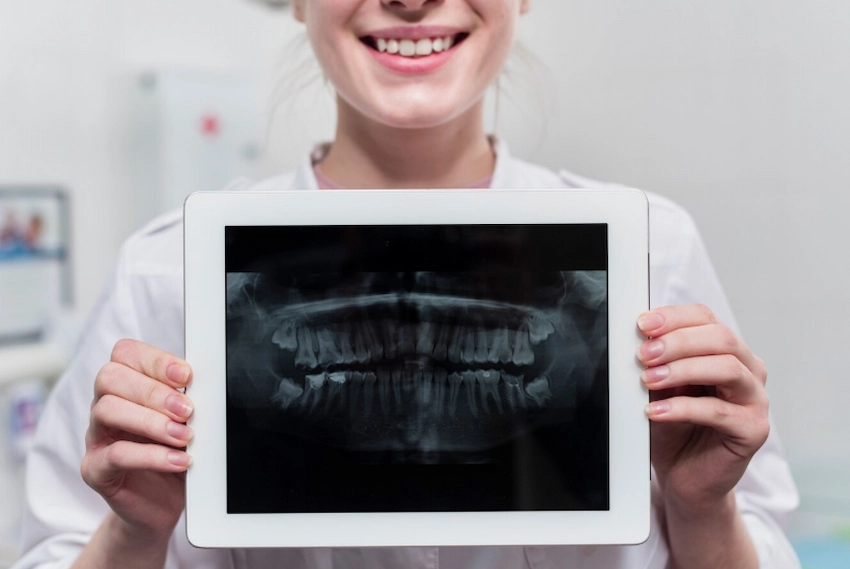
Panoramic dental X-rays do involve some amount of radiation, which is important for producing detailed images of your teeth and jaw. The x-radiation in a panoramic x-ray is few and considered safe. The radiation level is extremely lower than that of a complete body CT scan or even a chest x-ray.
The dentists use new high-tech machines that are set to release very few amounts of radiation to the patients. At Lema Dental Clinic, the dental team guarantees that you are fully protected by putting on protective lead aprons or collars in order to avoid unnecessary body radiation exposure. The procedure is non-invasive, and as the x-ray is only used where and when required, the benefits are much more than the potential risks. Panoramic x-rays are a paramount help in the early detection of hidden dental problems, which, in turn, leads to the prevention of more serious health conditions in the future.
What Factors Should Be Kept in Mind When Doing a Panoramic Dental X-Ray?
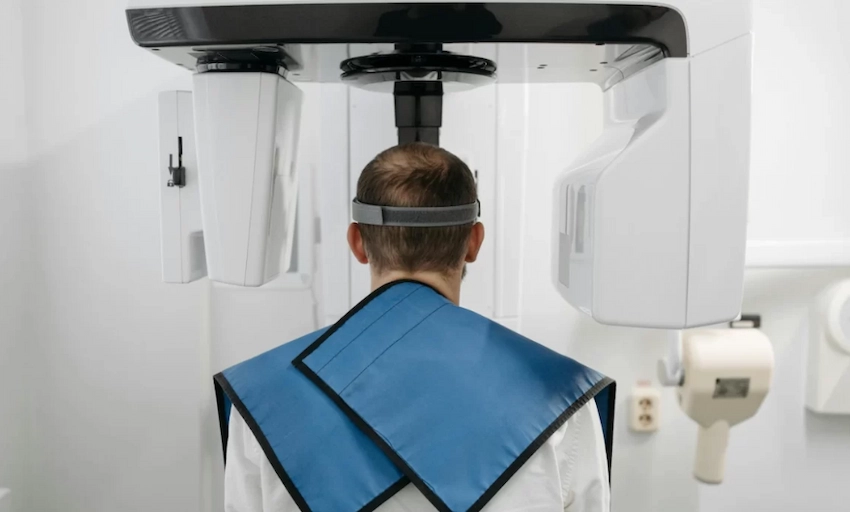
Even though panoramic dental X-rays are fast and simple to perform, you are still required to bear some things in mind while going through the process. As a first step, it is mandatory to stay in your position while the device turns around your head. The process of taking images is very delicate; that is why any sudden movement could cause the images to have a blurred or fuzzy look and would, therefore, require retaking. In the second place, the patient might be instructed to bite lightly for the purpose of maintaining the jaws in the same position during the imaging process.
Another step you are to take is to take off all pieces of jewelry, glasses, or other metals, which would prevent you from being affected by the X-ray and would not reflect the X-ray in the wrong direction, leading to blurry images. The dentist is likely to support you through the process of getting rid of the metals so that the process can proceed in a smooth and efficient manner. The resulting panoramic X-ray picture can be displayed almost instantly, and the dentist will point out any issues that need to be addressed as a result of the review.
FAQ: What is a Panoramic X-Ray and How is it Taken?
The question arises whether a panoramic dental X-ray is suitable for cavity detection. A panoramic dental X-ray is a type of extraoral imaging diagnostic tool that provides a general view of the teeth, but it may not always be accurate for the detection of tooth decay.
Of course, children can get a panoramic dental X-ray done. The decision to take the X-ray is influenced by the child’s age, health, and dental issues. In Lema Dental Clinic, the patient’s exposure to radiation is limited and only in cases of important reasons.
The entire procedure to do the panoramic x-ray may take about 5 to 10 minutes, but the actual imaging process takes 10-15 seconds. It’s a very fast and easy process and wastes little time..
The answer could be yes – a dentist could provide a pregnant woman with a panoramic dental x-ray, as long as protective measures are in place that ensure the safety and well-being of the woman and her child. Pregnant mothers who require a dental X-ray are consulted and informed. Lema Dental Clinic’s dentists decide if a lead shield should be used during the procedure to protect the woman and her child from radiation exposure.
A panoramic x-ray has a very low radiation level, less than many other types of radiography, such as a chest x-ray. It is not generating a significant risk to health in this way, and the time of exposure to radiation is very short, which makes the diagnostic equipment very reliable and safe.

